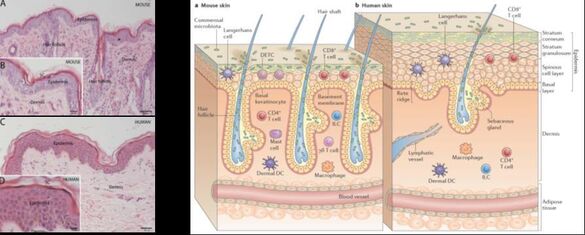Core Services

Service Project - Z02: “Skin in a tube”
As most of the projects try to translate their experimental data generated in vitro and in mice into the human system and as human tissue is only available in limited amounts, this leads to a significant demand for suitable human tissue models.
Skin reconstructs comprise a stratified, terminally differentiated epidermal compartment and a dermal compartment consisting of fibroblasts embedded in collagen. Cells in skin reconstructs more closely recapitulate the in situ phenotype than cells in monolayer culture.
KS01 - Clinical Development of imiquimod based immunotherapy
We have developed an imiquimod based transcutaneous immunization method (TCI) and characterized mechanisms for T cell activation in mice. For clinical translation, we are conducting a study with the novel imiquimod formulation IMI-Gel in patients with actinic keratosis to investigate tolerability and local inflammatory reactions. The results will reveal the applicability of IMI-Gel in humans and demonstrate similarities and differences of imiquimod induced skin changes between mice and man. Our prospective aim is to conduct a TCI trial in humans with HPV infections.
Principal investigators
Z02 - 3D Human Skin Models

Mouse and human skin differ significantly in cellular architecture and physiology which makes it difficult to extrapolate from mouse studies to humans. In vitro 3-dimensional (3D) human skin equivalents (HSE) including defined immune cell subsets or genetically manipulated cells can bridge the gap between traditional 2D cell culture and animal models and more likely reflect the complexity involved in human skin homeostasis. Using our long-standing expertise in human 3D skin models we provide a service for the application of human 3D skin models to the TR156 groups depending on their specific needs.

